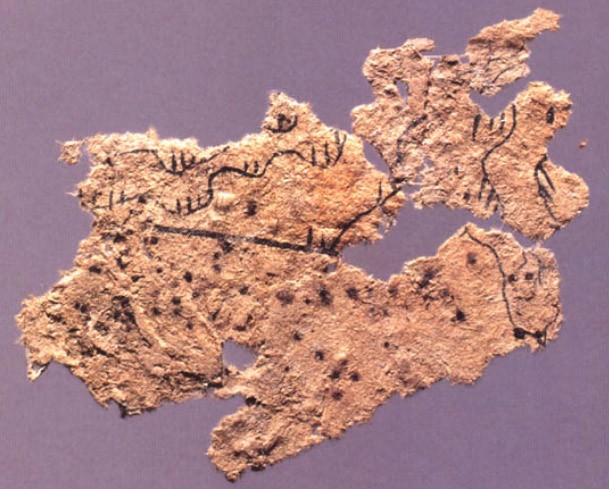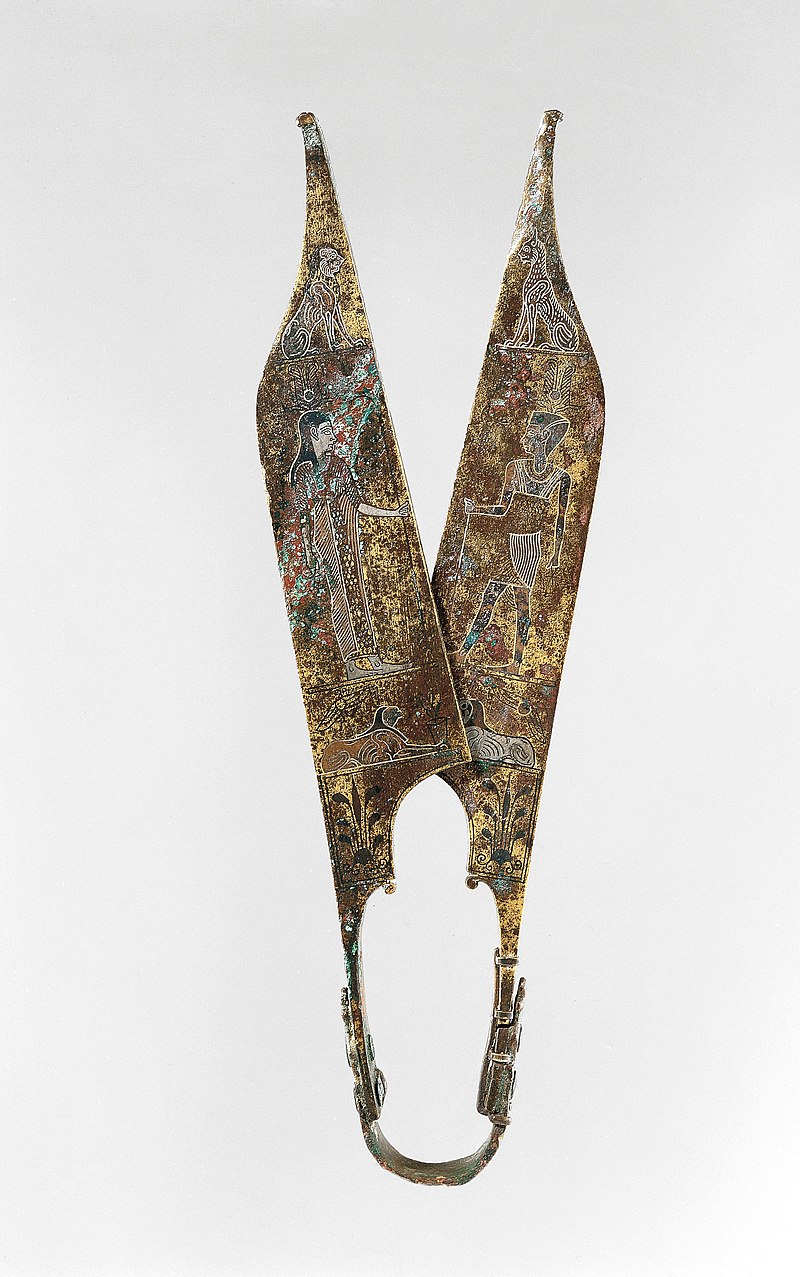Page 1 of 1
APOD: Found on the Moon: Candidate for... (2021 Feb 03)
Posted: Wed Feb 03, 2021 5:05 am
by APOD Robot
[img]https://apod.nasa.gov/apod/calendar/S_210203.jpg[/img] Found on the Moon: Candidate for Oldest Known Earth Rock
Explanation: Was the oldest known rock on Earth found on the Moon? Quite possibly. The story opens with the
Apollo 14 lunar mission. Lunar sample
14321, a large rock found in
Cone crater by astronaut
Alan Shepard, when analyzed back on Earth, was found to have a fragment that was a much
better match to Earth rocks than other Moon rocks. Even more surprising,
that rock section has recently been dated back
4 billion years,
making it older, to within measurement uncertainty, than
any rock ever found on Earth. A leading hypothesis now holds that an ancient comet or
asteroid impact launched Earth rocks into the Solar System, some of which fell back to
the Moon, became mixed with heated lunar soil and other rocks, cooled, and re-fragmented.
The video features an internal
X-ray scan of
14321 showing multiple sections with markedly different chemistries.
Moon rocks will continue to be
studied to learn a more complete history of the
Moon, the Earth, and the
early Solar System. Friday marks the
50th Anniversary of the
Apollo 14 landing on the Moon.
Re: APOD: Found on the Moon: Candidate for... (2021 Feb 03)
Posted: Wed Feb 03, 2021 7:00 am
by rj rl
Too bad youtube compressed the video into noise.
Re: APOD: Found on the Moon: Candidate for... (2021 Feb 03)
Posted: Wed Feb 03, 2021 10:03 am
by JohnD
It would have been redundant to repeat it in the APOD's description, but much more is learnt by going to the NASA page that describes rock 14321, via the second link. Other links show the precise fragment that is so old or are completely whimsical!
John
Re: APOD: Found on the Moon: Candidate for... (2021 Feb 03)
Posted: Wed Feb 03, 2021 2:15 pm
by orin stepanek
JohnD wrote: ↑Wed Feb 03, 2021 10:03 am
It would have been redundant to repeat it in the APOD's description, but much more is learnt by going to the NASA page that describes rock 14321, via the second link. Other links show the precise fragment that is so old or are completely whimsical!
John
Thanks; John! The movie was confusing to me! This is simpler!
 https://ares.jsc.nasa.gov/astromaterial ... 14321-1404
https://ares.jsc.nasa.gov/astromaterial ... 14321-1404
Re: APOD: Found on the Moon: Candidate for... (2021 Feb 03)
Posted: Wed Feb 03, 2021 4:50 pm
by johnnydeep
orin stepanek wrote: ↑Wed Feb 03, 2021 2:15 pm
JohnD wrote: ↑Wed Feb 03, 2021 10:03 am
It would have been redundant to repeat it in the APOD's description, but much more is learnt by going to the NASA page that describes rock 14321, via the second link. Other links show the precise fragment that is so old or are completely whimsical!
John
Thanks; John! The movie was confusing to me! This is simpler!
 https://ares.jsc.nasa.gov/astromaterial ... 14321-1404
https://ares.jsc.nasa.gov/astromaterial ... 14321-1404
Yeah, that 3D materials explorer app is pretty amazing. And even more amazing to me is that a fragment of an earth rock was found in such a vanishingly tiny percentage of the total lunar surface available to sample. That leads me to believe that almost ALL the lunar surface is infested with ancient earth rocks! Is this conclusion erroneous? Well, maybe since we've only sampled the near side (right?), perhaps only it is so infested...
Re: APOD: Found on the Moon: Candidate for... (2021 Feb 03)
Posted: Wed Feb 03, 2021 7:08 pm
by JohnD
See the ANSMET (Antarctic Search for Meteorites ) programme. So far they have collected 22,000 meterorites, many of them from the Moon or Mars!
Re: APOD: Found on the Moon: Candidate for... (2021 Feb 03)
Posted: Wed Feb 03, 2021 8:20 pm
by ta152h0
Excellent! Speaking of old things, I was curious to know if there's a slide rule in the Space Station, or is everything electronic, nothing manual?
pass the ice cold one
Candidate for Oldest Known Earth Rock
Posted: Wed Feb 03, 2021 9:27 pm
by neufer
https://en.wikipedia.org/wiki/History_of_paper#Paper_in_China wrote:
 Earliest known extant paper fragment unearthed at Fangmatan, circa 179 BCE
Earliest known extant paper fragment unearthed at Fangmatan, circa 179 BCE
<<Archaeological evidence of papermaking predates the traditional attribution given to Cai Lun, an imperial eunuch official of the Han dynasty (202 BCE – CE 220), thus the exact date or inventor of paper can not be deduced. The earliest extant paper fragment was unearthed at Fangmatan in Gansu province, and was likely part of a map, dated to 179–141 BCE. The invention traditionally attributed to Cai Lun, recorded hundreds of years after it took place, is dated to 105 CE. The innovation is a type of paper made of mulberry and other bast fibres along with fishing nets, old rags, and hemp waste which reduced the cost of paper production, which prior to this, and later, in the West, depended solely on rags.>>
https://en.wikipedia.org/wiki/Scissors#History wrote:
 These shears are thought to date to the 2nd century A.D. and come from a Roman settlement in Trabzon, Turkey. The style of the "Egyptianizing" metal inlay designs suggests that they were made to imitate actual Egyptian art. When closed, the dog and cat figures at the tips come face to face.
These shears are thought to date to the 2nd century A.D. and come from a Roman settlement in Trabzon, Turkey. The style of the "Egyptianizing" metal inlay designs suggests that they were made to imitate actual Egyptian art. When closed, the dog and cat figures at the tips come face to face.
<<The earliest known scissors appeared in Mesopotamia 3,000 to 4,000 years ago. These were of the 'spring scissor' type comprising two bronze blades connected at the handles by a thin, flexible strip of curved bronze which served to hold the blades in alignment, to allow them to be squeezed together, and to pull them apart when released.
Spring scissors continued to be used in Europe until the 16th century. However, pivoted scissors of bronze or iron, in which the blades were pivoted at a point between the tips and the handles, the direct ancestor of modern scissors, were invented by the Romans around 100 AD.[2] They entered common use in not only ancient Rome, but also China, Japan, and Korea, and the idea is still used in almost all modern scissors.>>
Re: APOD: Found on the Moon: Candidate for... (2021 Feb 03)
Posted: Wed Feb 03, 2021 9:33 pm
by orin stepanek
Re: APOD: Found on the Moon: Candidate for... (2021 Feb 03)
Posted: Wed Feb 03, 2021 10:40 pm
by neufer
ta152h0 wrote: ↑Wed Feb 03, 2021 8:20 pm
I was curious to know if there's a slide rule in the Space Station,
or is everything electronic, nothing manual?
https://en.wikipedia.org/wiki/Space_toilet wrote:
<<There are two toilets on the International Space Station, located in the Zvezda and Tranquility modules. They use a fan-driven suction system similar to the Space Shuttle WCS. Liquid waste is collected in 20-litre containers. Solid waste is collected in individual micro-perforated bags which are stored in an aluminum container.Full containers are transferred to Progress for disposal. An additional Waste and Hygiene Compartment is part of the Tranquility module launched in 2010. In 2007, NASA purchased a Russian-made toilet similar to the one already aboard ISS rather than develop one internally. On May 21, 2008, the gas liquid separator pump failed on the 7-year-old toilet in Zvezda, although the solid waste portion was still functioning. The crew attempted to replace various parts, but was unable to repair the malfunctioning part. In the interim, they used a manual mode for urine collection. The crew had other options: to use the toilet on the Soyuz transport module (which only has capacity for a few days of use) or to use urine-collection bags as needed. A replacement pump was sent from Russia in a diplomatic pouch so that Space Shuttle Discovery could take it to the station as part of mission STS-124 on June 2.>>
The slide rule transition took place on the first United States space station:
https://en.wikipedia.org/wiki/Skylab wrote:
 Astronaut Paul Weitz on Skylab 2 at the controls of the Apollo Telescope Mount. Notice the circular slide rule mounted at the top of the panel.
Astronaut Paul Weitz on Skylab 2 at the controls of the Apollo Telescope Mount. Notice the circular slide rule mounted at the top of the panel.
<<Skylab was the first United States space station, launched by NASA, occupied for about 24 weeks between May 1973 and February 1974. It was operated by three separate three-astronaut crews: Skylab 2, Skylab 3 and Skylab 4. Major operations included an orbital workshop, a solar observatory, Earth observation, and hundreds of experiments.
For personal computing needs Skylab crews were equipped with models of the then new hand-held electronic scientific calculator, which was used in place of slide-rules used on prior space missions as the primary personal computer. The model used was the Hewlett Packard HP 35. Some slide rules continued in use aboard Skylab, and a circular slide rule was at the workstation.>>
https://historical.ha.com/itm/transportation/space-exploration/buzz-aldrin-s-apollo-11-slide-rule-flown-to-the-moon/a/669-25368.s wrote:
<<Buzz Aldrin's Apollo 11 Slide Rule - Flown to the Moon. A Pickett Model N600-ES (Eye Saver) Log Log Speed Rule, a six-inch pocket rule with 22 five-inch scales. Most of today's cell phones have much more computing power than the Apollo 11 mission carried on board. Though they seem archaic to many of this present generation, the slide rule was (and is) a powerful computational tool and would certainly come in very handy on a space flight in the event of a computer malfunction. The rule offered here was flown to the moon aboard Apollo 11 by Dr. Aldrin. The Pickett Company, founded in 1943, was proud of the fact that NASA selected this slide rule model of theirs to fly on five of the Apollo missions; they used that fact in their advertising of the period.
Pickett slide rules flew on five of Apollo missions, a fact that the company crowed about in ads at the time. In September 2007, Heritage Auction sold the Pickett slide rule that Apollo 11 astronaut Edwin "Buzz" Aldrin took to the moon. The Pickett Model N600-ES (Eye Saver) Log Log Speed Rule, was 6 inches long with 22 five-inch scales. In 1969, the N600-ES sold for $10.95. Aldrin's moon-used slide rule fetched $77,675 at auction.>>


